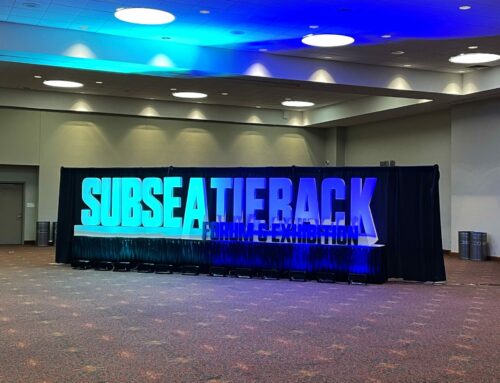How Does AI Help Energy and Infrastructure Asset Owners Make More Effective Decisions?
May 4, 2023
Everyone is talking about artificial intelligence (AI) and machine learning (ML). There are typically around 1.29 billion hits on Google, with an estimated 630,000 monthly searches globally, and these numbers grow constantly. It is a popular topic, and we’ve not even looked at AI content in closed platforms like LinkedIn.
Though search volume figures are a useful proxy, they don’t tell us everything that’s happening in a particular field. In fact, we know there’s far more to say about AI and machine learning across the energy and transport infrastructure sectors, and how this technology can help asset owners to take more informed decisions.
To find out more, we’ve spoken to two experts on our technical team, our Research Team Lead, Fisker Xu and Systems Engineering Lead, Keith Coventry. One thing that’s clear from the top few of those billion or so Google hits is the confusion over what AI is, or is not, and where machine learning fits in. So, this is the first question we put to them.
What actually is AI and machine learning?
“AI refers to machines that are capable of performing human-like tasks such as learning and problem-solving,” Fisker explains.
“Machine learning is a subfield of AI that focuses on enabling machines to learn and make decisions without being explicitly programmed to do so. In other words, instead of giving the machine explicit ‘rules’ to follow, machine learning algorithms are often trained on large amounts of data and use statistical techniques to find patterns and make predictions or decisions based on the data.”
Keith takes up the story with a transport application example: “We have first-hand knowledge of applying AI as an approach to support an existing solution. This is the kind of technique we have used with software that underpins CableGuardian, a solution used in the rail industry.”
How AI can benefit engineering asset management applications?
One common traditional perception of AI is how science fiction often portrays it as some disembodied non-human intelligence eventually doing its own thing, often to the detriment of the humans it is supposed to help.
But the reality is generally more mundane, although no less significant in terms of outcomes for infrastructure and engineering assets. As Fisker highlights, “AI has the potential to deliver significant risk management benefits, improving safety and performance. This includes faster, more accurate and consistent decision making, with significantly reduced human error, all available 24/7. Asset condition monitoring generates the large datasets that underpin AI and its continual improvement via machine learning.”
What does this mean in practice? The data analysis process becomes more efficient because AI can process volumes of data that would require hundreds of expert humans, and machine learning continually refines the process. It draws together experts working across different realms, often in isolation.
Fault detection leads to learning
“AI is good at working on repetitive, known, expected tasks, whereas humans are much better at creative and out-of-box thinking and dealing with unexpected emergencies,” adds Keith. “Take, for example, monitoring the data from a power control network. Faults can occur at any point during the life of an electrical system, from installation to decommissioning. These faults can be known and categorised, such as blown fuses, or unknown and uncategorised which require more intelligence and insight.
“AI continuously scans the data searching for events that look different from the ongoing noise. We have historical data from hundreds of installations of our solutions where AI could be used to categorise specific events. For example, ML would have the capability to recognise a seabed scouring event, such as a trawler or ROV activity, that damages an umbilical, causing seawater ingress and a change of insulation resistance (IR) from the usual pattern. It could be further enhanced to alert a human operator when it encounters an uncategorised event.”
According to Fisker, training with a labelled dataset is known as supervised learning, where the correct answer is already known, and the machine is learning how to map input features to the correct output data: “Matching historical seabed scouring-related failure data with operational data, for example.
“Unsupervised learning, on the other hand, refers to the situation where there aren’t correct answers. So, instead of predicting a specific output, the machine is instructed to group similar patterns or characteristics from the input data. Then there’s deep learning/neural networks, which are interconnected nodes or neurons in a layered structure that resembles the human brain. The use of the technique will depend on the actual use case but, generally speaking, the more known events/data available, the more accurate the model will be.”
One future goal is for AI to automatically recognise the most frequent and known events and continuously improve the performance as the volume of training data increases. Even for those unknown events, we would expect the AI to flag them as an anomaly and potential failure.
A combined approach to help asset owners make informed decisions
Whether it’s railway switchgear or a subsea umbilical, if expensive pieces of kit go down, performance suffers. Passenger journeys are disrupted, or production is halted, and time and money are lost forever. Managing infrastructure assets is a fine balance between optimising uptime while minimising downtime for maintenance and refits, all whilst ensuring safety is maintained.
“Humans can’t compute massive datasets and are generally inconsistent at following rules, but can be really good at dealing with anomalies and crises when they have enough information,” says Fisker. “Machines can analyse data and consistently follow rules, then identify what has happened and provide the information to humans.
“When you consider that the underlying causes of most safety breaches and disasters are process failures, AI powered by machine learning accelerates that whole decision-making process. It increases consistency and accuracy and provides that holistic view that humans find difficult. There is a future world where we will get the division of responsibility correct, enabling asset owners to choose when best to perform essential maintenance, or knowing they can safely run that transport link for another week and at low risk to avoid disrupting a major public event.”
Keith concludes: “Theoretically, anything process-related that a human can do, a machine can do. But many seemingly simple human activities would require an enormous level of data and processing power to deliver that activity with any degree of accuracy. So, like most things in life, it is teamwork that delivers the best outcome: humans and AI working together.”
Learn how AI is improving condition monitoring solutions for asset owners, providing actionable insights from data and optimising safety and performance. Email our expert team at enquiries@viperinnovations.com or get in touch via our contact form.




